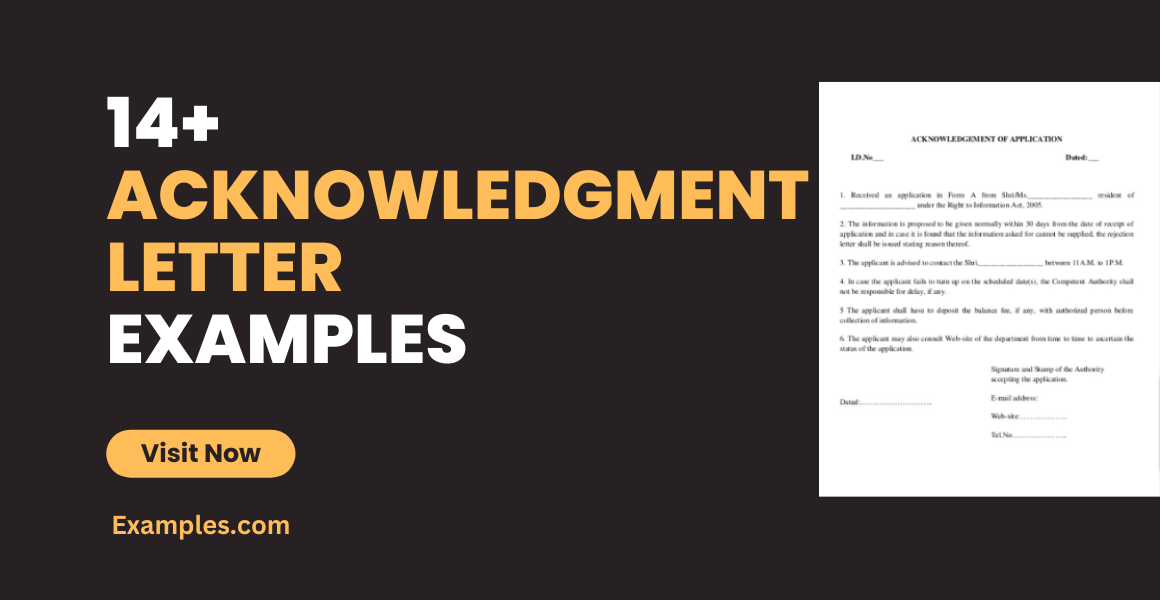14+ Acknowledgment Letter Examples to Download
Whenever we send a document or package to a particular person or company, wondering whether it was received or not is always a nerve-wracking feeling. That’s why it’s important to provide proof that you have obtained a certain item to put the sender at ease through an acknowledgment letter.
Read on below to know more about acknowledgment letters such as how to make them and tips when composing them.
Elements of an Acknowledgment Letter
Acknowledgment letters tend to be more formal than personal letters. But despite their differences in tone and structure, these letters typically consist of the same components as an average business letter.
1. Heading: This contains the return address along with the date of when the letter was sent, which is often indicated on the last line. Including your phone number, fax number, e-mail address, and other contact information may also be necessary.
2. Inside Address: This is the address of the person or organization you are sending the letter to. Titles and names must also be included when possible. This should always be found on the left margin of the page so that it can appear through the window of a 9″ business envelope.
3. Greeting: Also known as the salutation, this normally begins with the word Dear followed by the recipient’s title and last name. You can also use the person’s first name if the title is not known or unclear. You may also see acknowledgment receipt examples
4. Body: The body of your letter should indicate your reason for writing. Paragraphs may also be intended, depending on the letter style you choose to use. Remember to skip a line between paragraphs, the greeting and the body, and the body and the close as well.
5. Complimentary Close: The closing of your letter must always end with a comma. It should be kept short and polite using the words Respectfully, Sincerely, Yours, or the like.
6. Signature Line: Remember to type out the name to be signed about two lines below the complimentary close. This customarily includes a person’s middle initial, though you do have the option to remove it. This should provide enough space for you to sign the letter using blue or black ink.
7. Enclosure: While this isn’t always applicable, it is common for an acknowledgment letter to include an accompanying material that should be indicated after the signature line of the document. This can be a receipt, an invoice, a check, a cover letter, or even a form.You may also see writing an acknowledgement of resignation letter
14+ Acknowledgment Letter Templates
Acknowledgment Letter for Business
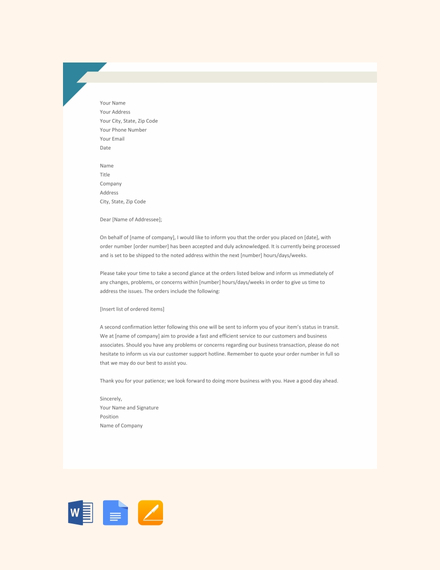
Acknowledgment Letter for Receiving Documents
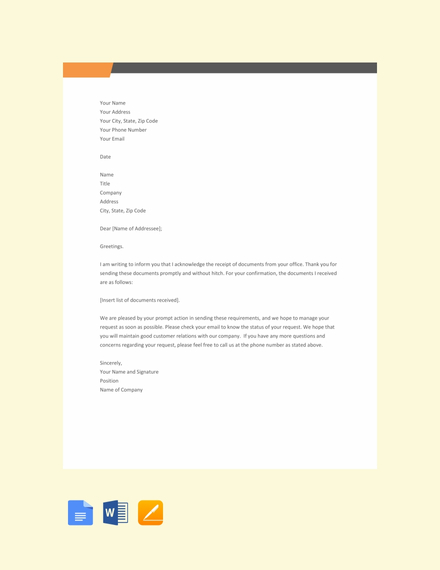
Acknowledgment Letter of Industrial Training
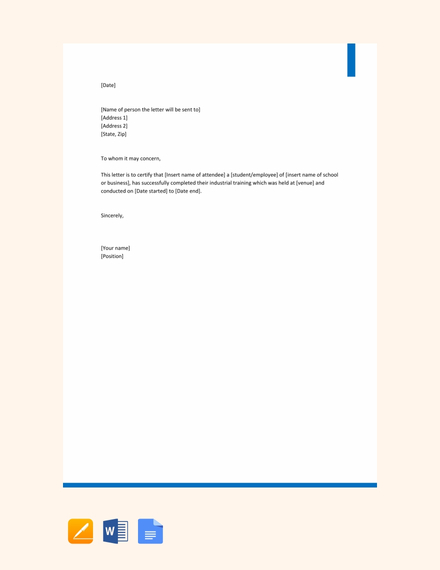
Donation Acknowledgment Letter
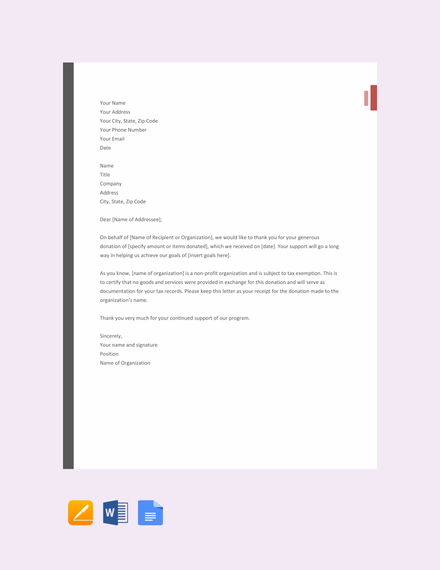
Job Training Acknowledgment Letter
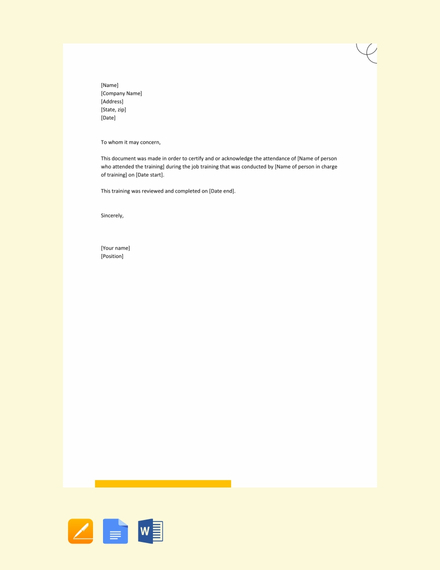
Letter for Acknowledgment of Receipt
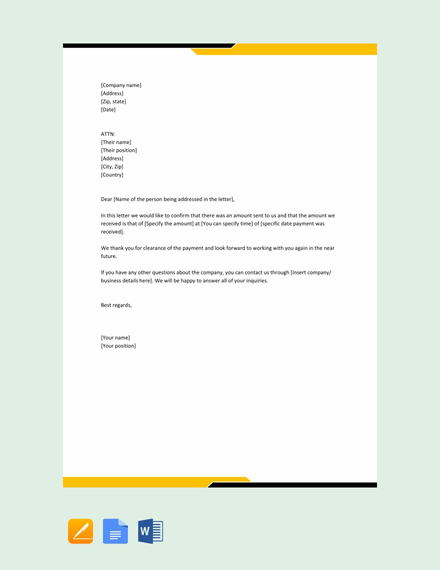
Letter for Acknowledgment of Receipt of Payment
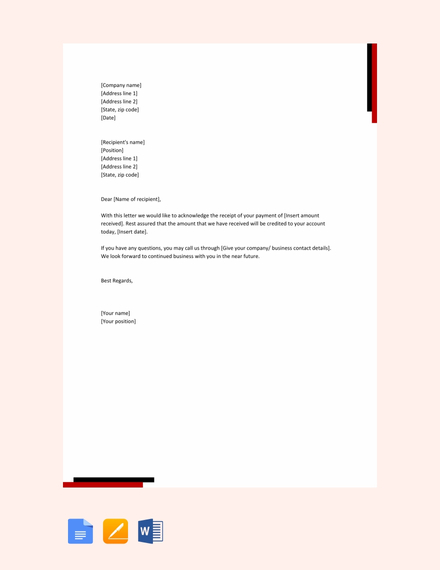
Order Acknowledgment Letter
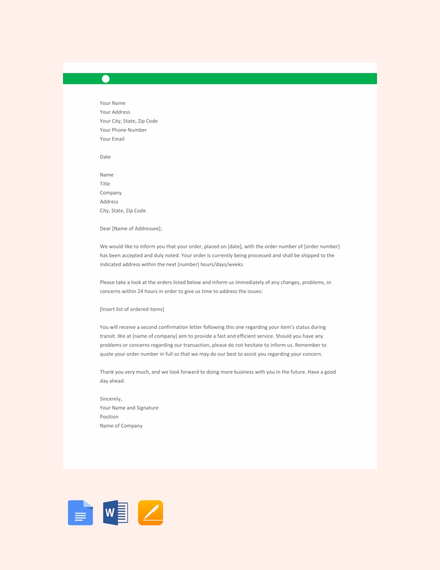
Receipt Acknowledgment Letter Template
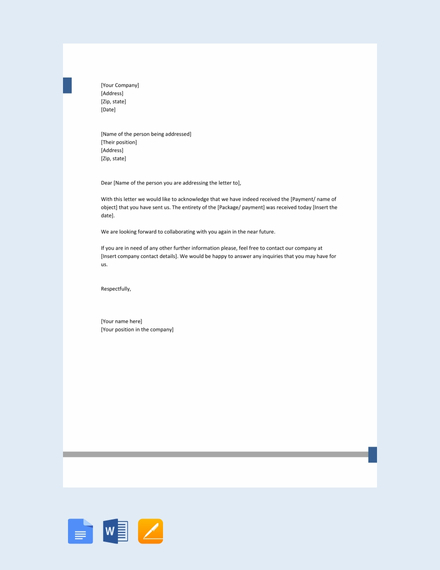
Training Acknowledgment Letter
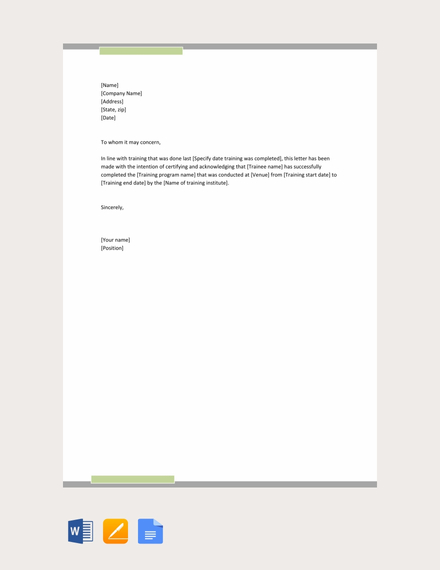
Acknowledgment License Application Letter
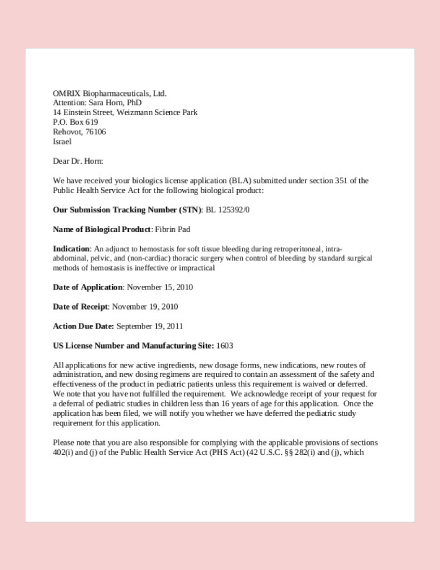 fda.gov
fda.govAcknowledgment of Application Letter
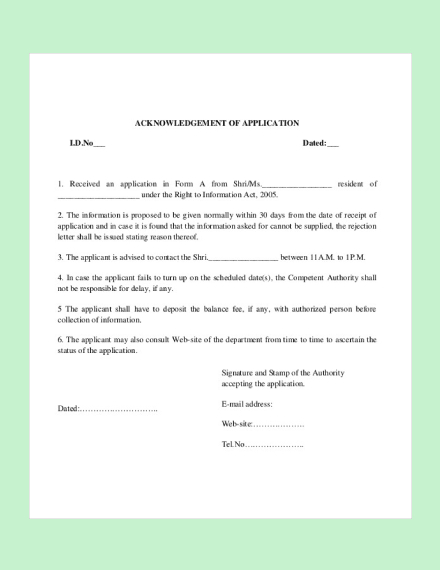 idemi.org
idemi.orgScholarship Application Acknowledgment Letter
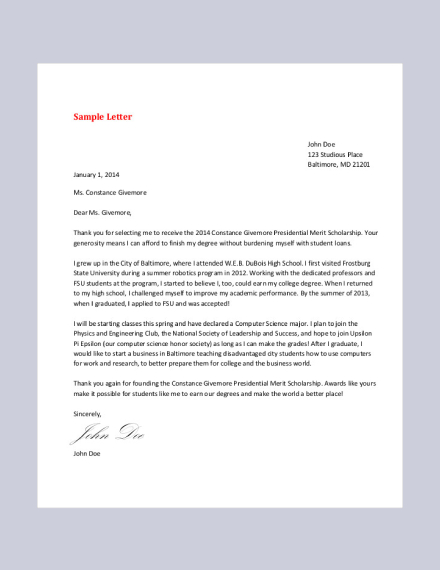 frostburg.edu
frostburg.eduStandard Acknowledgment Letter Format
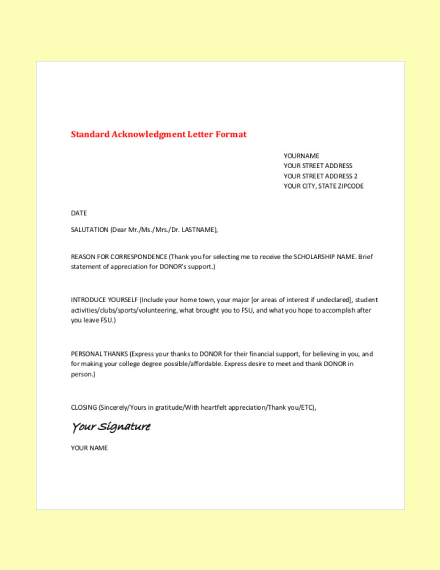 frostburg.edu
frostburg.eduVisa Application Acknowledgment Letter
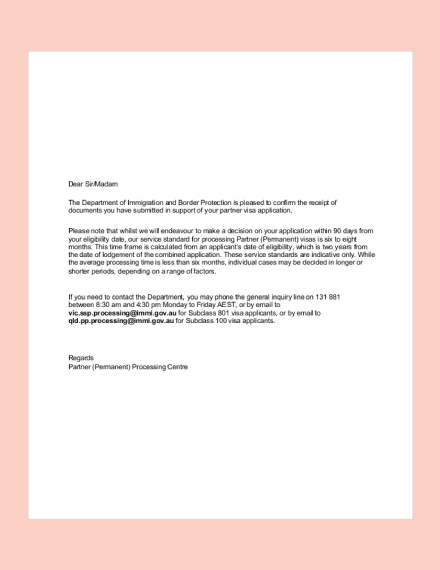 homeaffairs.gov.au
homeaffairs.gov.auHow to Write an Acknowledgment Letter
You’ve just been tasked to compose an acknowledgment letter for a job applicant who has sent in his resume and cover letter. The last thing you’d want him to do is worry and end up sending another batch of these documents to make sure you get them, so you need to let him know that these papers have been received and assessed as intended.
To do so, refer to the following guidelines:
1. Address your recipient:
As with any business or professional correspondence, you should always address the person you are writing to accordingly. This needs to be as specific and accurate as possible to make sure the letter reaches the right person. The title and spelling of one’s name should also be checked to avoid confusion.
2. State your reason for writing:
For the body of your letter, it’s always best to start with a brief sentence stating your purpose for writing. Some appropriate phrases you could use include “I hereby acknowledge the receipt of the following documents” and “I am acknowledging receipt of.” It should be followed with a one- or two-part paragraph explaining what you are acknowledging.
3. Include additional information:
Once you have made your acknowledgments clear, remember to provide additional instructions or details if necessary. There might be a few things your recipient should know about, and if you don’t want to prolong the exchange with constant follow-ups, it’s best to settle everything at once. Here, you can clarify your objective, thank the addressee for the time or opinion given, and share any relevant details that may address a question or concern.
4. Sign the letter:
For formality and legitimacy purposes, never forget to sign the letter. In most cases, this is the only part of the letter that is handwritten, as the rest of the document is usually printed. Remember to sign over your printed name using a blue- or black-colored ink to seal the acknowledgment.
Tips for Composing the Perfect Acknowledgment Letter
Acknowledgment letters are used to communicate one’s input to require further action. They also confirm and clarify the matter in question for the recipient to be informed. But for it to effectively serve its intended purpose, there are a few things to consider when writing your letter:
- Create an outline: Take the time to contemplate on all that you need to write. It’s a good idea to plan out the content of your letter to ensure that the necessary bases are covered. This will also create a logical flow of information to make sure your letter is properly organized.
- Draft your letter: If you aren’t too confident about writing the letter just yet, consider making a rough draft to get you started. You can use the information from your letter outline and divide it into short paragraphs for your content. This will help keep your message concise and well-conveyed.
- Be sincere: It’s important to sound genuine in your letter. This will keep the letter a bit more personalized for readers to appreciate. Keep in mind that acknowledgment letters have no place for harshness or rudeness, either. You need to start with a positive note and end with a respectful close.
- Keep it short and specific: Avoid irrelevant details that aren’t vital to your purpose. You must keep the letter specific to the subject in mention to ensure clarity in delivering your message. It’s best to use short and simple words and phrases to avoid ambiguity as well.
- Use a letterhead: When it comes to writing official letters, using a corporate letterhead is highly encouraged. Though they may not be necessary in personal letter writing, you do have the freedom to use one if wish to do so. The great thing about company letterheads is that they add a sense of formality to the letter thanks to its sophisticated design.
- Address it to a person: As much as possible, you need to make sure the letter is addressed to a specific person and not just the company or organization that they represent in general. This may take a thorough amount of research to figure out, but composing a letter based on human emotion and personal interaction is bound to leave a bigger impact.
- Timely acknowledgment: It is highly advisable to send the letter within a few days of obtaining the source for acknowledgment. Anything delayed may seem unprofessional and forced, which can greatly influence one’s perception toward your company.You may also see offer letter examples
- Proofread: Always remember to check your grammar, spelling, and sentence structure before printing the document. Using an active voice instead of a passive voice is also advised to flaunt your company’s repute. You need to make sure that the letter is easy to read to avoid any confusions or misinterpretations along the way. It’s a good idea to have a fresh pair of eyes review your acknowledgment letter for further assurance.
Types of Acknowledgment Letters
There are two general types of acknowledgment letters: the business acknowledgment letter and the personal acknowledgment letter. While they may be used for a similar purpose, the only difference between the two is in its form and structure.
For one, personal acknowledgment letters are usually addressed to a person you are close to or acquainted with. There are no strict rules or policies that must be observed when constructing these types of letters, as the writer may have the freedom to create the letter in any format. As for business acknowledgment letters, some common examples include those listed below:
- Acknowledgment for the Receipt of Goods
- Donation Acknowledgment Letter
- Payment Acknowledgment Letter
- Complaint Acknowledgment Letter
- Retirement Acknowledgment Letter
- Resume Acknowledgment Letter
- Order Acknowledgment Letter
Acknowledgment Letter FAQs
Listed below are a few frequently asked questions surrounding a letter of acknowledgment:
How can I make an acknowledgment letter?
Start with an outline for your letter. Make a list of points you want to address then organize these thoughts and ideas in a structured manner. Make sure to address your recipient accordingly, specify what you are acknowledging, and provide further details about the matter for one to be guided. But if you’re in a hurry and don’t want to start from scratch, you could always download a ready-made template and customize it to suit your requirements as a quick and easy alternative.
What is the purpose of an acknowledgment letter?
Letters of acknowledgment basically serve as a receipt. In addition to informing the recipient that a certain document or payment has been received, the letter could also specify what action will be taken in regards to the document obtained. It should be sent as soon as possible for the recipient to remain updated.
Why is an acknowledgment letter important?
In business practice, acknowledgment letters are an essential part of a transaction or exchange as they are used to indicate when certain goods or documents are received. So whenever your company receives any kind of business document or package from whomsoever, it becomes your duty to send an acknowledgment letter in return. This proves that one party has met the requirements stipulated in a business agreement or contract. Hence, they help build trust and cooperation between two entities.
An acknowledgment letter plays a significant role in public relations. Thus, they must be written clearly and concisely for recipients to grasp. So the next time you find yourself in need of such letter, remember to keep these guidelines and examples in mind.


